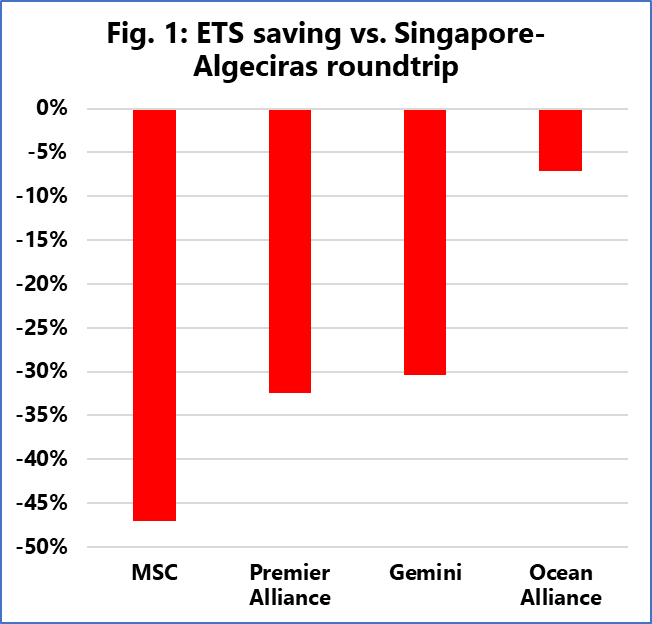With the EU ETS CO2 levy system, all ships will be required to pay the same amount for emissions.
Compared to other alliances, however, the industry giant MSC can save considerably on levies. The Emissions Trading System (ETS) is the CO2 tax for shipping in the European Union. All ships sailing within the EU must pay a levy. The levy applies 100% to journeys between two EU ports. However, if one of the ports is outside the EU, 50% must still be paid.
This system allows shipping companies to save a considerable amount of tax on certain routes. For maximum savings, a ship must call at the nearest possible port outside the ETS area before entering the EU.
MSC saves ETS charges through network
The analysis service Sea-Intelligence has calculated this using the route from Singapore to Algeciras as an example. A ship that calls at a non-EU port between the two ports would only pay 50% in emissions on the journey between this port and Algeciras. If there is no stopover, the 50% applies to the entire journey from Singapore – a much longer route with significantly higher emissions.
This revealed a clear “winner” in the industry. The dense network of ports served by the Mediterranean Shipping Company (MSC) leads to the greatest possible savings in the ETS system. The reportable distance between Asia and Europe is almost halved – none of the alliances can keep up. The Premier Alliance (ONE, Yang Ming and HMM) and Gemini (Maersk and Hapag-Lloyd) will be almost on a par, with only the Ocean Alliance (Cosco, CMA CGM, Evergreen and OOCL) lagging far behind.
In terms of emissions payments, this gives MSC a major cost advantage, while the Ocean Alliance would be one of the clear losers from the EU ETS. However, it is expected that the Alliance will publish an updated grid for 2025 that takes into account the EU CO2 tax.















